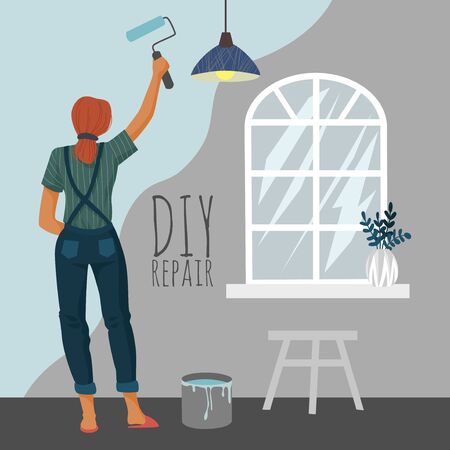Assessing Your Space and Needs
Before you dive into transforming your spare room into a functional office, take a moment to evaluate the space you’re working with. Start by measuring the room’s dimensions—this will help you determine what size furniture will fit comfortably and allow for easy movement. Pay attention to natural light sources; windows can boost mood and productivity, so consider how you can position your desk to take advantage of daylight without creating glare on your screen. Next, think about what you truly need in a home office. Do you require lots of storage for files and supplies, or is a minimalistic setup more your style? Consider your daily work habits, any special equipment (like printers or dual monitors), and how much privacy you’ll need from household distractions. By thoroughly assessing these factors, you lay the foundation for a workspace that not only fits your budget but also supports both productivity and comfort.
2. Setting a Realistic Budget
Before you dive into transforming your spare room, it’s crucial to establish a budget that fits your financial comfort zone. Start by determining exactly how much you can afford to spend without stretching yourself too thin. This will help you make smart choices throughout the project and prevent overspending.
Decide on Your Total Budget
Grab a notepad or open a spreadsheet and jot down your maximum spending limit for this office makeover. Be honest about what’s manageable; even a modest budget can go far with thoughtful planning.
Prioritize Must-Haves vs. Nice-to-Haves
List out the essentials you need for a functional workspace—think desk, chair, lighting, and storage. Then, make a secondary list of “nice-to-haves” like decorative items or extra tech gear. Focusing first on must-haves ensures your office is practical from day one.
| Must-Have | Estimated Cost ($) | Nice-to-Have | Estimated Cost ($) |
|---|---|---|---|
| Desk | $100 | Wall Art | $40 |
| Chair | $80 | Plants/Greenery | $25 |
| Lamp/Lighting | $30 | Coffee Maker | $50 |
| Shelving/Storage Bins | $60 | Cushion/Pillow | $20 |
Identify Opportunities to Save
This is where creativity shines. Look around your home to see if there are items you can reallocate or repurpose—maybe a sturdy dining chair becomes your new desk seat, or an unused bookshelf finds purpose in your office. Consider DIY solutions for decor or organization, such as crafting your own corkboard or painting thrifted furniture for a fresh look. Shopping secondhand at local thrift stores or browsing online marketplaces like Facebook Marketplace and Craigslist can also stretch your dollars further.
Budget-Savvy Strategies at a Glance:
- Reallocate: Move underused furniture from other rooms.
- Repurpose: Transform existing items with a little imagination.
- DIY: Tackle small projects yourself—YouTube has tutorials for everything!
- Bargain Hunt: Shop sales, clearance aisles, and online marketplaces for deals.
A Thoughtful Approach Pays Off
Taking the time to set a realistic budget and prioritize needs ensures that every dollar spent brings value and style to your new workspace—without breaking the bank.

3. Choosing Multi-Functional and Affordable Furniture
When you’re transforming a spare room into an office without breaking the bank, choosing the right furniture is crucial. Look for pieces that serve multiple purposes—think space-saving desks with built-in shelves or fold-out tables that can be tucked away when not in use. Ergonomic chairs are a must for long hours of work, but you don’t have to spend a fortune. Brands like IKEA, Target, and Wayfair offer budget-friendly options that combine comfort and style. Don’t overlook local thrift stores or Facebook Marketplace; you might score a high-quality chair or storage unit for a fraction of the price. If you’re into DIY, consider upcycling old furniture with a fresh coat of paint or new hardware to give it a modern look. Opt for storage solutions like wall-mounted shelves or rolling carts that keep your workspace organized while adding visual interest. Ultimately, focus on pieces that maximize utility without sacrificing your aesthetic—creating a space that inspires productivity and creativity every day.
Maximizing Natural Light and Improving Lighting
If you want to boost your productivity and create a welcoming workspace, lighting is everything. The right lighting can elevate your mood, sharpen your focus, and make your spare room feel much more inviting—without blowing your budget.
Arrange Furniture to Harness Natural Light
The simplest way to enhance any office space is to maximize natural light. Position your desk near a window so you benefit from daylight throughout the workday. This not only helps reduce eye strain but also makes the room feel open and airy. If you have limited window space, try arranging seating or shelving in a way that doesn’t block the light coming in.
Add Cost-Effective Task Lighting
Not every day is sunny, and sometimes you’ll be working late. Supplement natural light with affordable task lighting solutions. Desk lamps with LED bulbs are energy-efficient and offer focused illumination where you need it most. Clip-on lamps are another wallet-friendly choice—they’re flexible and don’t take up precious desk space. For a cohesive look, choose lamps in finishes that match your office decor, such as matte black or brushed nickel.
Comparison of Budget-Friendly Lighting Options
| Type | Average Cost | Best For | Pros | Cons |
|---|---|---|---|---|
| LED Desk Lamp | $15-$40 | Focused tasks | Energy-efficient, adjustable brightness | Takes up some desk space |
| Clip-On Lamp | $10-$25 | Small desks, shelves | Space-saving, portable | Limited reach/coverage |
| Floor Lamp | $20-$50 | Larger spaces, ambient lighting | Covers more area, stylish options available | Takes up floor space |
| String Lights/Fairy Lights | $8-$20 | Accent lighting, ambiance | Budget-friendly, cozy vibe | Not suitable for task lighting |
Use Mirrors to Amplify Light and Space
A designer trick for brightening small rooms is to use mirrors strategically. Place a mirror on the wall opposite your window to reflect natural light deeper into the room. Not only does this double the amount of light bouncing around, but it also visually expands the space—making even a modest home office feel bigger and brighter.
Bounce More Light with Simple Styling Tips:
- Select mirrors with clean frames for a modern look.
- Avoid cluttering windowsills with objects that block sunlight.
- If privacy is needed, opt for sheer curtains to diffuse light without darkening the room.
With thoughtful placement of furniture, affordable lighting upgrades, and smart use of mirrors, you can transform your spare room into an energizing workspace that doesn’t break the bank.
5. Personalizing with Decor and Functional Accessories
Once your spare room has the basics of a functional office, it’s time to infuse some character and comfort without straining your wallet. Adding personality and warmth doesn’t have to mean splurging on expensive art or designer accessories. Start by curating wall art that inspires you—think affordable prints from local artists on Etsy, framed motivational quotes, or even DIY abstract canvases. Plants are another budget-friendly way to breathe life into your workspace; a few low-maintenance succulents or a snake plant can add freshness while improving air quality.
Affordable Organizers for a Tidy Desk
Organization is key in any productive office, but there’s no need to buy high-end organizers. Repurpose mason jars, decorative baskets, or thrift-store trays to keep pens, paper clips, and chargers in order. Over-the-door hooks or pegboards can maximize vertical space for storing supplies or displaying calendars and reminders. The goal is to create a place for everything, ensuring your work area stays clutter-free and visually pleasing.
Add Texture and Comfort
Introduce cozy elements like a patterned throw pillow for your chair or a soft area rug underfoot. These touches not only make the space more inviting but also absorb sound, reducing distractions. Window treatments like simple curtains or blinds can control lighting and add style without costing much.
Mix Functionality with Style
Choose accessories that serve dual purposes whenever possible—a stylish lamp doubles as both decor and essential lighting; a corkboard can display both important notes and personal mementos. Remember, personalizing your home office should reflect your unique taste while keeping functionality front and center. By mixing creativity with smart shopping, you’ll achieve a space that feels uniquely yours—without breaking the bank.
6. Cable Management and Tech Essentials
One of the easiest ways to elevate your spare room office is to keep it clutter-free—and that starts with smart cable management. Tangled cords not only disrupt the look of your workspace but can also be distracting and even hazardous. Invest in affordable cable organizers like adhesive clips, zip ties, or a simple cable box. These small additions can make a big visual difference without breaking your budget.
Choosing the Right Tech for Your Needs
When it comes to technology, focus on essentials that fit both your workflow and your wallet. Start with a reliable laptop or desktop—look for refurbished models or seasonal sales to save extra cash. Consider whether you really need extras like dual monitors or high-end speakers, or if a streamlined setup will work better for you and your space.
Keep It Simple and Efficient
Less is often more in a home office, especially when transforming a spare room. Stick to must-haves: a good-quality webcam for video calls, an ergonomic keyboard, and perhaps a compact printer if you deal with paperwork. Avoid overloading your desk with gadgets that don’t serve your daily tasks.
Pro Tip: Hide Cords for a Clean Look
Route cables along the back of your desk or wall using adhesive clips or cord covers. If your workspace allows, opt for wireless accessories like a mouse and keyboard to further reduce visible clutter. A tidy tech setup not only looks more professional but also makes it easier to stay focused and productive.
By managing cables effectively and choosing just the tech essentials, you’ll create an organized environment that supports creativity, productivity, and style—all while staying within budget.


